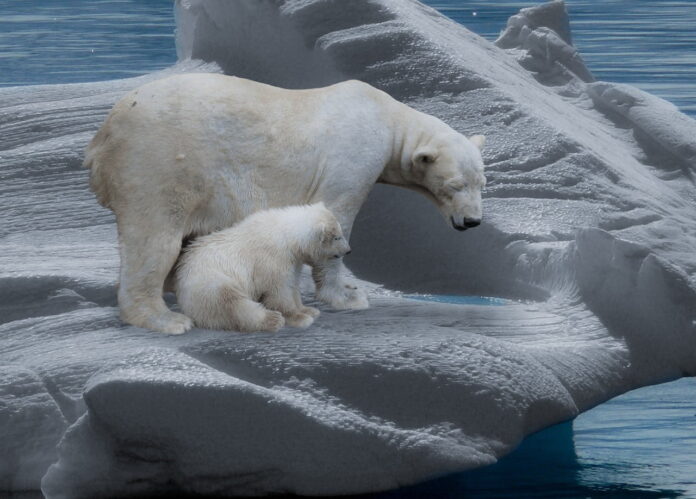Biodiversity, the variety of life on Earth, is a complex and vital aspect of our planet’s health. It encompasses the multitude of species, their genetic differences, and the intricate ecosystems they form. However, this rich tapestry of life is under threat from a rapidly changing climate. Climate change, driven by human activities such as deforestation and the burning of fossil fuels, is altering the natural balance, with profound implications for biodiversity. The interdependence between climate and biodiversity is such that changes in one invariably affect the other, leading to a cascade of impacts that can undermine the resilience of both natural systems and human societies.
The Science of Climate Change: Understanding the Global Shifts
Climate change is a global phenomenon characterized by alterations in temperature, precipitation patterns, and extreme weather events. The science behind these shifts is rooted in the increase of greenhouse gases in the Earth’s atmosphere, primarily carbon dioxide (CO2), methane (CH4), and nitrous oxide (N2O). These gases trap heat from the sun, leading to a warming effect known as the greenhouse effect.
The Intergovernmental Panel on Climate Change (IPCC) has provided evidence that the global average temperature has increased by approximately 1.1 degrees Celsius since the pre-industrial era, with projections of further increases unless significant mitigation efforts are undertaken.
Direct Effects of Climate Change on Species and Habitats
The direct effects of climate change on species and their habitats are becoming increasingly evident. Rising temperatures can lead to shifts in species’ geographic ranges, as they move towards the poles or to higher elevations in search of suitable conditions. For example, studies have shown that some plant and animal species are relocating at an average rate of 17 kilometers per decade towards the poles.
Additionally, changes in seasonal events, such as earlier spring onset, can disrupt the timing of breeding, migration, and food availability, leading to mismatches between species and their environment. Coral reefs, which are highly sensitive to temperature changes, are experiencing widespread bleaching events as a result of increased sea temperatures, threatening the myriad species that depend on them.
Secondary Impacts: The Cascading Effects on Ecosystems
The secondary impacts of climate change on ecosystems are often more complex and far-reaching. As individual species respond to climate shifts, the intricate web of interactions within ecosystems can be disrupted. For instance, changes in the distribution of key species can alter food webs, leading to a decline in some populations and the proliferation of others.
This can result in a loss of ecosystem services, such as pollination, water purification, and carbon sequestration, which are essential for human well-being. Climate change can exacerbate other stressors like habitat fragmentation, pollution, and invasive species, compounding the challenges faced by biodiversity.
Case Studies: Species and Ecosystems Under Threat
Numerous case studies highlight the vulnerability of species and ecosystems to climate change. The polar bear, an iconic species of the Arctic, is facing habitat loss as sea ice diminishes, reducing its ability to hunt seals and leading to population declines.
In the Amazon rainforest, increased frequency and severity of droughts are contributing to tree mortality and the potential for large-scale forest dieback, which would have catastrophic consequences for global biodiversity. Another example is the mountain pygmy possum of Australia, which relies on snow cover for insulation during hibernation; reduced snowfall is threatening its survival.
Mitigation and Adaptation: Strategies for Preserving Biodiversity
To address the impacts of climate change on biodiversity, a combination of mitigation and adaptation strategies is required. Mitigation involves reducing greenhouse gas emissions to slow down global warming. This can be achieved through transitioning to renewable energy sources, improving energy efficiency, and protecting and restoring forests and other carbon sinks. Adaptation strategies aim to enhance the resilience of species and ecosystems to the unavoidable effects of climate change.
This includes creating protected areas, establishing wildlife corridors to facilitate species movement, and implementing assisted migration or translocation for species unable to relocate on their own. Engaging local communities, integrating traditional knowledge, and fostering global cooperation are also crucial for successful biodiversity conservation in the face of climate change.
The impact of climate change on biodiversity is a pressing concern that requires immediate and sustained action. By understanding the science behind climate change, recognizing the direct and secondary effects on species and ecosystems, learning from case studies, and implementing effective mitigation and adaptation strategies, we can work towards preserving the rich biodiversity that sustains life on Earth. The future of our planet’s biodiversity hinges on our ability to respond to these challenges with ingenuity, commitment, and a sense of shared responsibility.
